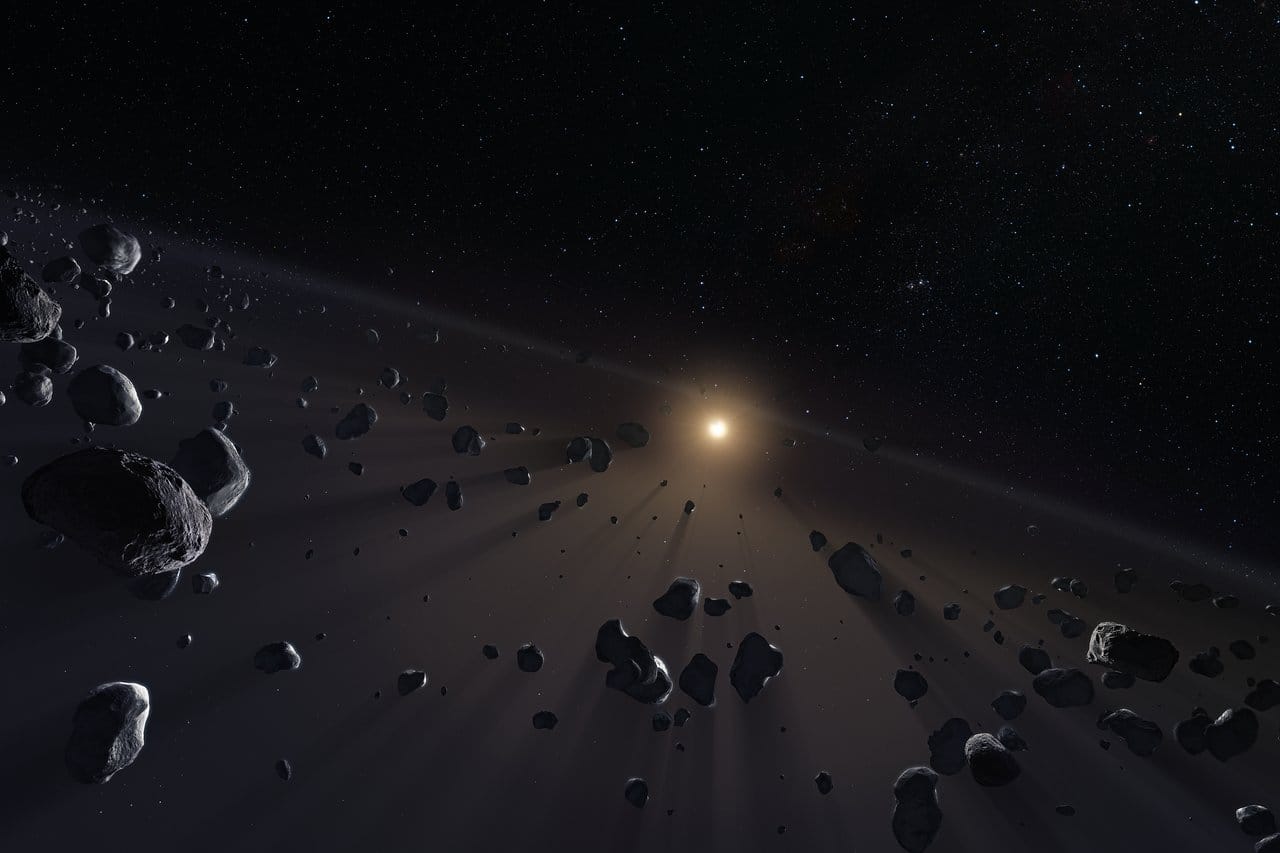Scientists have discovered possible hints of an undiscovered world in the solar system—nicknamed “Planet Y”—orbiting about 100 to 200 times farther from the Sun than Earth, according to a new study.
The newly proposed planet, assuming it exists, is predicted to be somewhere between Mercury and Earth in scale, which would likely make it detectable within the next few years. It is distinct from Planet Nine or Planet X, another hypothetical planet that is predicted to be much larger and more distant than Planet Y.
Scientists speculated about the potential existence of Planet Y after discovering a strange “warp” in the Kuiper belt, which is a ring of icy bodies beyond Neptune, reports the study, which was posted on the preprint server arXiv on Wednesday.
“We still are skeptical because it's not a ‘grand slam’ signal by any means,” said Amir Siraj, a graduate student in astrophysics at Princeton University who led the study, in a call with 404 Media. “At the most, it's a hint—or it’s suggestive of—an unseen planet.” The paper has been accepted for publication in The Monthly Notices of the Royal Astronomical Society, Siraj said.
Siraj and his co-authors made the discovery while laying the groundwork for an upcoming search for Planet Nine. For more than a decade, scientists have debated whether this hypothetical world—roughly five to ten times as massive as Earth, making it a “super-Earth” or “mini-Neptune”—is orbiting at a distance of at least 400 astronomical units (AU), where one AU is the distance between Earth and the Sun.
Scientists came up with the Planet Nine hypothesis after observing small celestial bodies beyond the orbit of Neptune called trans-Neptunian objects (TNOs), which appear to be gravitationally influenced by some hidden phenomenon. Planet Nine could be the culprit.
It’s an exciting time for Planet Nine watchers, as the next-generation Vera C. Rubin Observatory in Chile achieved first light in June. Rubin is expected to begin running its signature project, the Legacy Survey of Space and Time (LSST), by the end of 2025, and will spend a decade scanning the southern sky to produce a time-lapsed map that could expose Planet Nine, if it exists.
For this reason, scientists are gearing up for a worldwide race to be the first to spot the planet in the incoming LSST data. To prepare for the observational onslaught, Siraj and his colleagues have been developing new techniques to learn all they can about the murky Kuiper belt.
“This is something I've been focusing on for the past couple of years, particularly because we are going to be flooded very soon—knock on wood—with thousands of new TNOs from the Vera C. Rubin Observatory’s LSST,” said Siraj. “So, my philosophy for the past couple of years has been, well, let me make sure I know everything that I can know from all the efforts so far.”
To that end, the team developed an improved technique for measuring the mean motions of objects in the distant Kuiper belt and comparing them to the plane of the solar system. Ideally, the mean plane of the objects’ orbits should fall in line with the solar system’s plane, but deviations could point to more evidence for Planet Nine.
Instead, the team’s novel approach found that the Kuiper belt’s mean plane was tilted by about 15 degrees relative to the solar system plane at ranges of 80 to 400 AU. This “warp” could be caused by many factors, such as orbital resonances with known solar system planets. But it could also hint at the presence of a small rocky world, lurking anywhere from three-to-five times as far as the orbit of Pluto.
“It was certainly a big surprise,” Siraj said. “If this warp holds up, the best explanation we can come up with is an undiscovered and relatively small inclined planet, roughly 100 to 200 AU from the Sun. The other thing that was exciting to us is that, whether the warp is real or not, it will be very quickly confirmed or refuted within the first few years of LSST’s operation.”
Scott Sheppard, an astronomer at the Carnegie Institution for Science who was not involved in the study, said the work was “interesting” but that “it is hard to say if the results are significant” in an email to 404 Media.
Sheppard, who is an expert on small worlds in the solar system, noted that there could be multiple explanations for the weird orbital motions and pointed out that the authors acknowledge their findings are below the standard of “over 99 percent to make something likely.”
“A warped outer plane would be interesting if real, but a planet also isn’t the only explanation as passing stars or other effects could have done something similar in the distant past,” Sheppard concluded.
If there truly is an undiscovered Mercury-ish world beyond Pluto, it is probably a homegrown member of the solar system that was ejected by the turbulent environment in the early solar system. Planet Nine, in contrast, could have either formed in the solar system, or it could have been a wandering exoplanet that was gravitationally captured by the solar system.
“The solar system probably formed with a lot of planetary embryos,” Siraj said. “There were probably a lot of bodies that were roughly Mercury-mass and most of them likely were just scattered out of the solar system like balls in a pinball machine during the violent stages of solar system formation.”
“That would definitely be the most likely and possible formation scenario for such an object,” he added. “I think it would be very unlikely for an orbit like this to be produced from a capture event.”
Time will tell whether or not the warp represents a lost world that was kicked out of our local neighborhood more than four billion years ago. But the intense focus on the outer solar system and its many mysteries, spurred by LSST, is sure to bring a flood of new discoveries regardless. Indeed, the hypothetical existence of Planet Y does not rule out the existence of Planet Nine (and vice versa) so there may well be multiple mysterious worlds waiting to be added to our solar family.
“It is really remarkably hard to see objects in the outer solar system,” Siraj said. “These kinds of measurements were not even remotely possible 20 years ago, so this speaks to the technological progress that's been made. It is potentially putting us into an era in astronomy that's unfamiliar these days, but was much more familiar in, say, the 1700s or 1800s—the idea of adding another planet to our own solar system.”

